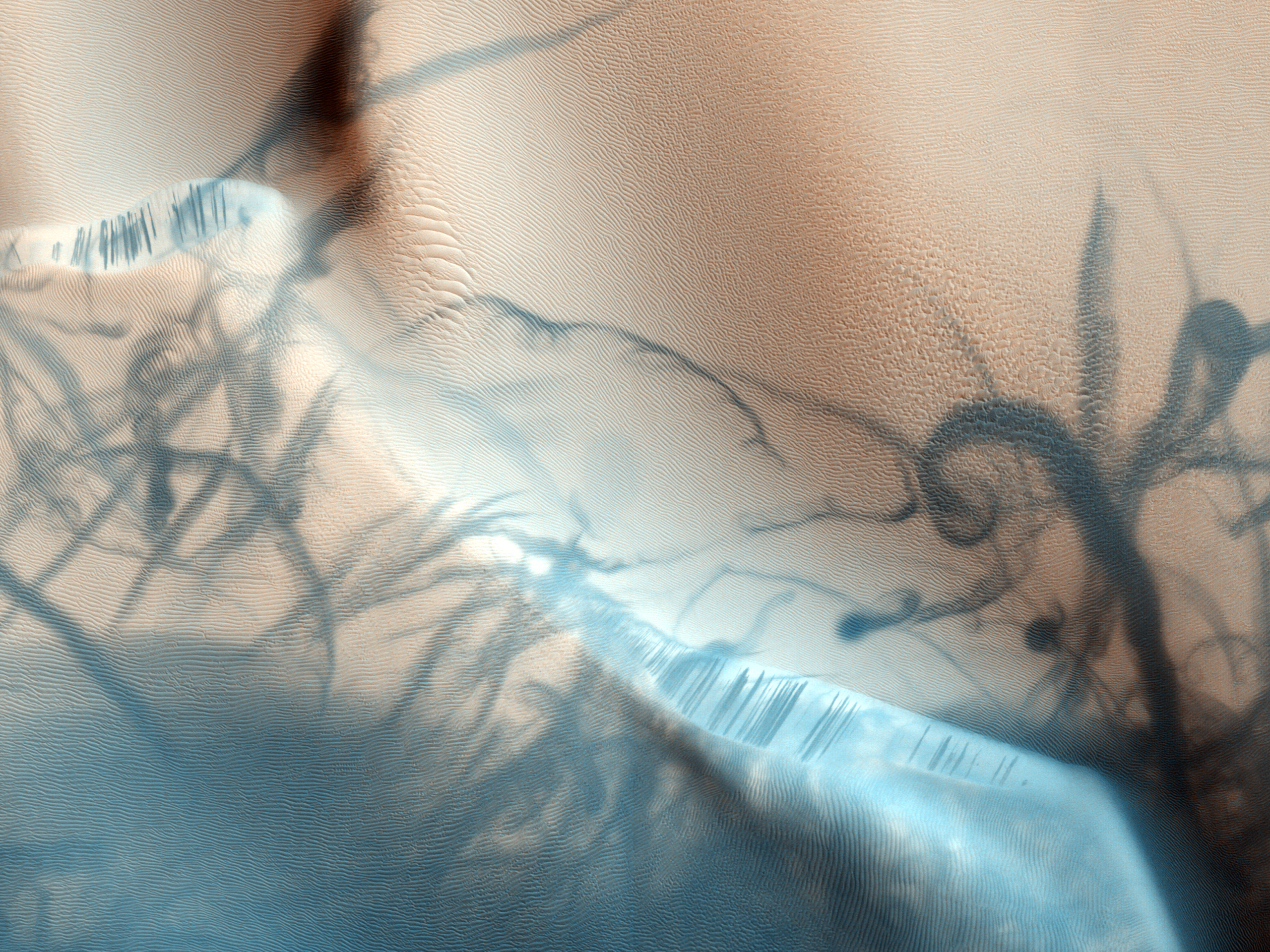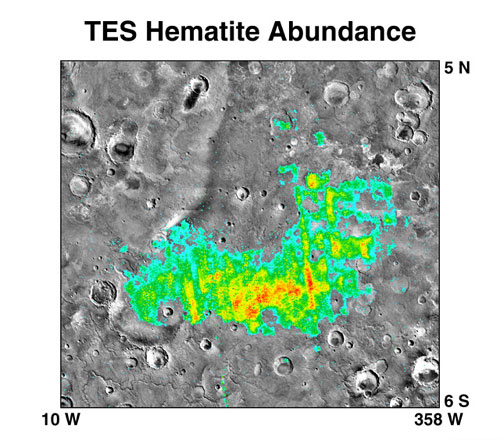|
Kasei Vallis
The Kasei Valles are a giant system of canyons in Mare Acidalium and Lunae Palus quadrangles on Mars, centered at 24.6° north latitude and 65.0° west longitude. They are long and were named for the word for "Mars" in Japanese. This is one of the largest outflow channel systems on Mars. Geography This huge system is 300 miles wide in some places. In contrast, Earth's Grand Canyon is only 18 miles wide. It is one of the longest continuous outflow channel systems on Mars. The Kasei Valles system begins in Echus Chasma, near Valles Marineris. It runs initially northward, then turns eastward and appears to empty into Chryse Planitia, not far from where Viking 1 landed. At around 20° north latitude the system splits into two channels, called Kasei Vallis Canyon and North Kasei Channel. These branches recombine at around 63° west longitude, forming a large island between the channels known as Sacra Mensa. Some parts of the Kasei Valles are 2–3 km deep. Lik ... [...More Info...] [...Related Items...] OR: [Wikipedia] [Google] [Baidu] |
Bahram Vallis
Bahram Vallis is an ancient river valley in the Lunae Palus quadrangle of Mars at 20.7° north latitude and 57.5° west longitude. It is about 302 km long and was named after the word for 'Mars' in Persian. Bahram Vallis is located midway between Vedra Valles and lower Kasei Valles. It is basically a single trunk valley, with scalloped walls in some places. The presence of streamlined erosional features on its floor shows that fluid was involved with its formation.Baker, V. 1982. The Channels of Mars. University of Texas Press. Austin Image:Kasei Valles topolabled.JPG, Area around Northern Kasei Valles, showing relationships among Kasei Valles, Bahram Vallis, Vedra Valles, Maumee Valles, and Maja Valles. Map location is in Lunae Palus quadrangle and includes parts of Lunae Planum and Chryse Planitia. Image:Bahram Vallis.JPG, Bahram Vallis, as seen by HiRISE. Rotational landslides (slumps) are visible at the base of north wall. File:ESP 056904 2015valley.jpg, Cl ... [...More Info...] [...Related Items...] OR: [Wikipedia] [Google] [Baidu] |
Viking 1
''Viking 1'' was the first of two spacecraft, along with '' Viking 2'', each consisting of an orbiter and a lander, sent to Mars as part of NASA's Viking program. The lander touched down on Mars on July 20, 1976, the first successful Mars lander in history. ''Viking 1'' operated on Mars for days (over 6 years) or Martian solar days, the longest Mars surface mission until the record was broken by the ''Opportunity'' rover on May 19, 2010. Mission Following launch using a Titan/Centaur launch vehicle on August 20, 1975, and an 11-month cruise to Mars, the orbiter began returning global images of Mars about five days before orbit insertion. The ''Viking 1'' Orbiter was inserted into Mars orbit on June 19, 1976, and trimmed to a 1,513 x 33,000 km, 24.66 h site certification orbit on June 21. Landing on Mars was planned for July 4, 1976, the United States Bicentennial, but imaging of the primary landing site showed it was too rough for a safe landing. The landing was de ... [...More Info...] [...Related Items...] OR: [Wikipedia] [Google] [Baidu] |
Cambridge University Press
Cambridge University Press is the university press of the University of Cambridge. Granted letters patent by Henry VIII of England, King Henry VIII in 1534, it is the oldest university press in the world. It is also the King's Printer. Cambridge University Press is a department of the University of Cambridge and is both an academic and educational publisher. It became part of Cambridge University Press & Assessment, following a merger with Cambridge Assessment in 2021. With a global sales presence, publishing hubs, and offices in more than 40 Country, countries, it publishes over 50,000 titles by authors from over 100 countries. Its publishing includes more than 380 academic journals, monographs, reference works, school and university textbooks, and English language teaching and learning publications. It also publishes Bibles, runs a bookshop in Cambridge, sells through Amazon, and has a conference venues business in Cambridge at the Pitt Building and the Sir Geoffrey Cass Spo ... [...More Info...] [...Related Items...] OR: [Wikipedia] [Google] [Baidu] |
University Of Arizona Press
The University of Arizona Press, a publishing house founded in 1959 as a department of the University of Arizona, is a nonprofit publisher of scholarly and regional books. As a delegate of the University of Arizona to the larger world, the Press publishes the work of scholars wherever they may be, concentrating upon scholarship that reflects the special strengths of the University of Arizona, Arizona State University, and Northern Arizona University. The Press publishes about fifty books annually and has some 1,400 books in print. These include scholarly titles in American Indian studies, anthropology, archaeology, environmental studies, geography, Chicano studies, history, Latin American studies, and the space sciences. The UA Press has award-winning books in more than 30 subject areas. The UA Press also publishes general interest books on Arizona and the Southwest borderlands. In addition, the Press publishes books of personal essays, such as Nancy Mairs's ''Plaintext'' and t ... [...More Info...] [...Related Items...] OR: [Wikipedia] [Google] [Baidu] |
HiRISE
High Resolution Imaging Science Experiment is a camera on board the ''Mars Reconnaissance Orbiter'' which has been orbiting and studying Mars since 2006. The 65 kg (143 lb), US$40 million instrument was built under the direction of the University of Arizona's Lunar and Planetary Laboratory by Ball Aerospace & Technologies Corp. It consists of a 0.5m (19.7 in) aperture reflecting telescope, the largest so far of any deep space mission, which allows it to take pictures of Mars with resolutions of 0.3m/pixel (1ft/pixel), resolving objects below a meter across. HiRISE has imaged Mars exploration rovers on the surface, including the ''Opportunity'' rover and the ongoing ''Curiosity'' mission. History In the late 1980s, of Ball Aerospace & Technologies began planning the kind of high-resolution imaging needed to support sample return and surface exploration of Mars. In early 2001 he teamed up with Alfred McEwen of the University of Arizona to propose such ... [...More Info...] [...Related Items...] OR: [Wikipedia] [Google] [Baidu] |
THEMIS
In Greek mythology and religion, Themis (; grc, Θέμις, Themis, justice, law, custom) is one of the twelve Titan children of Gaia and Uranus, and the second wife of Zeus. She is the goddess and personification of justice, divine order, fairness, law, and custom, and her symbols include the Scales of Justice. She is also associated with oracles and prophecies, including the Oracle of Delphi. Name ''Themis'' means "divine law" rather than human ordinance, literally "that which is put in place", from the Greek verb ''títhēmi'' ( τίθημι), meaning "to put." To the ancient Greeks she was originally the organizer of the "communal affairs of humans, particularly assemblies." Moses Finley remarked of ''themis'', as the word was used by Homer in the 8th century BCE, to evoke the social order of the 10th- and 9th-century Greek Dark Ages: Finley adds, "There was ''themis''—custom, tradition, folk-ways, ''mores'', whatever we may call it, the enormous power of 'it is ( ... [...More Info...] [...Related Items...] OR: [Wikipedia] [Google] [Baidu] |
Thermal Emission Imaging System
The Thermal Emission Imaging System (THEMIS) is a camera on board the 2001 Mars Odyssey orbiter. It images Mars in the visible and infrared parts of the electromagnetic spectrum in order to determine the thermal properties of the surface and to refine the distribution of minerals on the surface of Mars as determined by the Thermal Emission Spectrometer (TES). Additionally, it helps scientists to understand how the mineralogy of Mars relates to its landforms, and it can be used to search for thermal hotspots in the Martian subsurface. THEMIS is managed from the Mars Space Flight Facility at Arizona State University and was built by the Santa Barbara Remote Sensing division of Raytheon Technologies Corporation, an American multinational conglomerate headquartered in Waltham, Massachusetts. The instrument is named after Themis, the goddess of justice in ancient Greek mythology. Infrared camera THEMIS detects thermal infrared energy emitted by the Martian surface at nin ... [...More Info...] [...Related Items...] OR: [Wikipedia] [Google] [Baidu] |
Dry Falls
Dry Falls is a scalloped precipice with four major alcoves, in central Washington scablands. This cataract complex is on the opposite side of the Upper Grand Coulee from the Columbia River, and at the head of the Lower Grand Coulee, northern end of Lenore Canyon. According to the current geological model, catastrophic flooding channeled water at 65 miles per hour (105 kph) through the Upper Grand Coulee and over this rock face at the end of the last glaciation. It is estimated that the falls were five times the width of Niagara Falls, with ten times the flow of all the current rivers in the world combined. Nearly twenty thousand years ago, as glaciers moved south through North America, an ice sheet dammed the Clark Fork River near Sandpoint, Idaho. Consequently, a significant portion of western Montana flooded, forming the gigantic Lake Missoula. About the same time, Glacial Lake Columbia was formed on the ice-dammed Columbia River behind the Okanogan lobe of the Cordill ... [...More Info...] [...Related Items...] OR: [Wikipedia] [Google] [Baidu] |
Lunar And Planetary Institute
The Lunar and Planetary Institute (LPI) is a scientific research institute dedicated to study of the Solar System, its formation, evolution, and current state. The Institute is part of the Universities Space Research Association (USRA) and is supported by the Science Mission Directorate of the National Aeronautics and Space Administration (NASA). Located at 3600 Bay Area Boulevard in Houston, Texas, the LPI maintains an extensive collection of lunar and planetary data, carries out education and public outreach programs, and offers meeting coordination and publishing services. The LPI sponsors and organizes several workshops and conferences throughout the year, including the Lunar and Planetary Science Conference (LPSC) held in March in the Houston area. History In his March 1968 speech at the Manned Spacecraft Center (MSC) in Houston, Texas, President Lyndon B. Johnson announced the formation of the Lunar Science Institute (LSI). "We will welcome here all who are intereste ... [...More Info...] [...Related Items...] OR: [Wikipedia] [Google] [Baidu] |
Tharsis
Tharsis () is a vast volcanic plateau centered near the equator in the western hemisphere of Mars. The region is home to the largest volcanoes in the Solar System, including the three enormous shield volcanoes Arsia Mons, Pavonis Mons, and Ascraeus Mons, which are collectively known as the Tharsis Montes. The tallest volcano on the planet, Olympus Mons, is often associated with the Tharsis region but is actually located off the western edge of the plateau. The name Tharsis is the Greco-Latin transliteration of the biblical Tarshish, the land at the western extremity of the known world. Location and size Tharsis can have many meanings depending on historical and scientific context. The name is commonly used in a broad sense to represent a continent-sized region of anomalously elevated terrain centered just south of the equator around longitude 265°E.Carr, M.H. (2006). ''The Surface of Mars;'' Cambridge University Press: Cambridge, UK, p. 46. . Called the Tharsis bulge or T ... [...More Info...] [...Related Items...] OR: [Wikipedia] [Google] [Baidu] |
Sacra Mensa
Sacra Mensa is a mesa in the Lunae Palus quadrangle of Mars, located between the northern and southern channels of the Kasei Valles. Located roughly 66.5° west longitude and 24.6° north latitude, the mesa is a highland between two deep outflow valleys. The mesa is located just west of the Sharonov impact crater. References External linksKasei Valles outflow channel system- European Space Agency , owners = , headquarters = Paris, Île-de-France, France , coordinates = , spaceport = Guiana Space Centre , seal = File:ESA emblem seal.png , seal_size = 130px , image = Views in the Main Control Room (120 ...Kasei Valles mosaic(ESA) Lunae Palus quadrangle Mensae on Mars {{Mars-stub ... [...More Info...] [...Related Items...] OR: [Wikipedia] [Google] [Baidu] |
.jpg)







